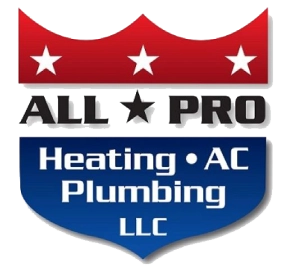
If you’ve ever walked upstairs in your Monticello, IL home only to feel like you’ve stepped into a sauna, you’re not alone. It’s a common frustration for homeowners in two-story houses—especially during warm weather. You adjust the thermostat, crank up the AC, and yet, while the downstairs is nice and cool, the upstairs feels like a completely different climate.
Monticello experiences a wide range of temperatures throughout the year, with humid summers and cold winters, which makes effective climate control a year-round necessity—not just a seasonal luxury. But when it comes to summer comfort, cooling your entire home evenly, especially a two-story one, can feel like a constant battle. Luckily, there are several solutions that can help you achieve balanced temperatures, greater efficiency, and more consistent comfort throughout your home.
In this post, we’ll break down why temperature imbalances happen, how to fix them, and what homeowners in Monticello can do to enjoy cool, even air no matter what floor they’re on.
Why Two-Story Homes Heat Unevenly
Before we jump into solutions, it’s helpful to understand why this problem occurs in the first place. It’s not your imagination—there’s real science behind it.
The Stack Effect
The number one reason for temperature differences in two-story homes is something called the stack effect. This is a natural airflow phenomenon where warm air rises and cool air sinks. In the summer, this means your upstairs rooms tend to trap warm air, while your downstairs remains cooler. Because heat moves toward cooler spaces, it continues to rise, creating a hotter upper level—especially if insulation and airflow aren’t properly balanced.
Ductwork Limitations
Most traditional HVAC systems are designed with a single thermostat and one zone, typically located on the first floor. That means your system cools the entire house based on the temperature of that one area. If your upstairs is baking and your downstairs is already cool, the thermostat might never trigger the AC to keep running long enough to cool the second floor.
Poorly sized or leaky ducts can make this problem worse. According to the U.S. Department of Energy, duct losses can account for more than 30% of energy consumption in a typical central air conditioning system—especially if the ducts are in unconditioned areas like attics or crawlspaces.
Common Signs of Uneven Cooling
If you’re wondering whether this issue applies to your home, here are some telltale signs:
-
The upstairs is significantly hotter than the downstairs, even with the AC running.
-
You find yourself constantly adjusting the thermostat without real comfort.
-
Some rooms never feel as cool as others.
-
Your energy bills are climbing but your home doesn’t feel cooler.
If you recognize any of these symptoms, it’s likely time to evaluate how your HVAC system is performing and consider solutions.
Strategies to Evenly Cool a Two-Story Home
Let’s explore some of the most effective ways to address uneven cooling in a two-story home. Some of these can be done with simple adjustments, while others may involve professional HVAC upgrades.
1. Use a Zoning System
One of the most efficient long-term solutions for a two-story home is installing a zoned HVAC system. This allows your home to be divided into separate zones—usually by floor—each with its own thermostat and controls.
Zoning systems use dampers in the ductwork to regulate and redirect airflow to specific areas of the home. This way, if your upstairs needs more cool air, your system can send it there without overcooling the downstairs.
According to ENERGY STAR, zoning systems can improve energy efficiency by up to 30%, especially in multi-story homes. Not only will your home feel more comfortable, but your HVAC system won’t have to work as hard to compensate for the heat imbalance.
2. Install a Second Thermostat
A simpler version of zoning is adding a second thermostat. While this doesn’t automatically control airflow like a full zoning system does, it can give you more control over temperature settings upstairs and downstairs. However, this typically works best when paired with dampers or a compatible HVAC system.
3. Check and Adjust Dampers in Ductwork
Many HVAC systems come with manual dampers already installed in the ducts—though many homeowners don’t know they’re there. These dampers can be adjusted seasonally to help redirect air.
In the summer, slightly closing dampers leading to downstairs rooms can force more air to go upstairs, helping balance the airflow. In winter, the process can be reversed.
Make sure any adjustments are done carefully, and never fully close a damper, as this could strain your HVAC system and reduce efficiency.
4. Seal and Insulate Ducts
As mentioned earlier, leaky ducts are a major source of energy loss and airflow inefficiencies. Sealing your ducts can help ensure that the air being pushed through the system actually makes it to the rooms it’s supposed to cool.
Likewise, insulating ductwork—especially in unconditioned areas like attics—helps prevent cool air from warming up before it reaches the second floor. According to the Environmental Protection Agency (EPA), properly sealed ducts can improve HVAC efficiency by up to 20%.
5. Improve Attic Insulation and Ventilation
Your attic plays a huge role in temperature regulation. A poorly insulated attic allows excessive heat to build up and transfer into the second floor of your home. In fact, on a sunny day, attic temperatures can reach 130°F or higher, radiating heat downward.
Upgrading attic insulation and improving ventilation (such as adding ridge vents or attic fans) helps reduce the temperature difference between your attic and living space, making it easier to maintain a cool second floor.
6. Use Ceiling Fans Correctly
Ceiling fans are often underestimated when it comes to cooling a space. While they don’t lower the temperature, they circulate air and create a wind-chill effect that makes rooms feel up to 4°F cooler.
In the summer, make sure your ceiling fans are set to spin counterclockwise. This pushes cool air down and helps the room feel cooler. Use them especially in upstairs rooms to help distribute air more evenly and reduce the burden on your AC.
7. Close Blinds and Curtains During the Day
Solar heat gain through windows can quickly warm up the second floor of your home. Closing blinds, curtains, or using thermal shades during peak sunlight hours can help block out the heat.
Homes with large south- or west-facing windows are especially prone to this. By reducing the sun’s impact, you can maintain a cooler indoor temperature without increasing your AC usage.
8. Service and Maintain Your HVAC System
Routine HVAC maintenance is essential to efficient and even cooling. Filters should be changed regularly (usually every 1–3 months), coils should be cleaned, and airflow should be checked by a professional technician.
A dirty or aging system will struggle to keep up, and that often translates to poor cooling upstairs. According to the U.S. Department of Energy, neglecting regular maintenance can reduce HVAC efficiency by up to 15%.
Having your system checked by a professional—especially before peak cooling season—ensures that everything is working properly and efficiently.
9. Upgrade to a Variable-Speed HVAC System
Traditional HVAC systems operate in a simple on/off cycle. When the thermostat triggers cooling, the system runs at full power until the target temperature is met, then shuts off. This can lead to uneven cooling and short cycling.
Variable-speed systems, on the other hand, adjust the compressor speed and airflow gradually based on the home’s needs. This helps maintain consistent temperatures throughout the house while also improving energy efficiency.
While upgrading your HVAC system is a bigger investment, it can dramatically improve comfort—especially in homes with two or more levels.
10. Consider a Ductless Mini-Split System
For homes where ductwork adjustments are difficult or costly, ductless mini-split systems can be a great option. These systems allow you to cool individual rooms or zones independently, without relying on central ductwork.
They are especially useful for upstairs bedrooms or additions that never seem to stay cool. Plus, mini-splits are known for their high efficiency and quiet operation.
How Local Climate in Monticello, IL Impacts Cooling
Monticello’s location in central Illinois means it experiences a humid continental climate. This includes hot, humid summers, where temperatures frequently climb into the 80s and 90s with high moisture levels.
This combination places additional stress on your air conditioning system, particularly in homes with multiple stories or large attic spaces. When it comes to cooling in Monticello, proper ventilation, insulation, and HVAC system configuration are not just helpful—they’re necessary for comfort and energy efficiency.
Additionally, the humidity adds another layer of complexity. High humidity can make upstairs rooms feel stuffy and warmer than they actually are. That’s why moisture control—through proper ventilation, dehumidifiers, and efficient air circulation—is a critical part of your cooling strategy.
For AC Services in Monticello, IL, Contact All Pro Heating AC Plumbing Today
If you’re tired of battling uneven temperatures in your Monticello home, the team at All Pro Heating AC Plumbing is here to help. Our experienced professionals can evaluate your HVAC system, recommend personalized solutions, and perform expert service that ensures your entire home stays cool and comfortable.
Whether it’s installing a zoning system, sealing your ductwork, or simply helping you optimize airflow with strategic maintenance, we’re committed to making your two-story home a comfortable haven all summer long.
Don’t settle for hot bedrooms and freezing basements. Get in touch with All Pro Heating AC Plumbing today and let us help you create a more balanced, efficient, and comfortable indoor climate—one floor at a time.
